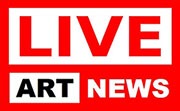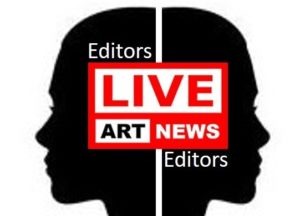Pharrell Williams was spotted at this year’s Art Basel Hong Kong. Artist Rashid Johnson posed with fans, as did Beeple and Takashi Murakami. Qatar Museums chair Sheikha Al-Mayassa bint Hamad bin Khalifa Al-Thani was out on the event circuit. Not to mention a number of top collectors from around the globe: London-based Saudi-born Abdullah AI-Turki, Switzerland’s Uli Sigg and Maja Hoffmann, and Mima Reyes from Puerto Rico.
Despite reports of the city’s decline in recent years, Hong Kong remains one of the most convenient places for the art world to conduct business. Its unique geographical location makes it an ideal place for dealers and clients to connect, particularly those from across Asia, and, of course, there’s a high concentration of wealth.
This year, some visitors reported attending upwards of two-dozen events, from gallery openings to parties and dinners—and few complained about their hectic schedules.
“It feels like there are more events and things are a lot more elaborate this year than in the pre-Covid times. So many art world stars are here in Hong Kong,” curator Wong Ka Ying, who is also an artist, told Artnet News.
Art advisor Thomas Stauffer, the co-founder of Gerber and Stauffer Fine Arts in Zurich, shared a similar view. This was the first time he had returned to Hong Kong since the last Art Basel in the city in March 2019. “It’s a packed week and many galleries and luxury brands compete with each other to get the attention of the Hong Kong art crowd. It’s been a fruitful and rewarding trip to re-engage and continue the dialogue about collecting art with our Asian clients after not being able to meet in person for more than three years,” he told Artnet News.
The ecstatic atmosphere felt by both the international art crowd and local players on the ground, whether at fairs like Art Basel or Art Central, dinners and parties at M+ or the HKGTA Town Club, a new hotspot right in the heart of the city’s Central district, is an important statement that the city is ready to re-emerge onto the global scene after years of the pandemic and political unrest.
“Hong Kong is back,” as many collectors visiting the city told Artnet News.
The return of prominent mainland Chinese collectors such as Qiao Zhibing, founder of Tank Shanghai; entrepreneur Chong Zhou; Lu Xun, co-founder of Nanjing’s Sifang Art Museum; and fashion entrepreneur Li Lin has delighted a lot of gallerists. Many Mandarin-speaking tour groups packed the aisles during the first VIP day, and there was no lack of a well-dressed Gen-Z crowd.
Stauffer observed that works by Western artists such as Emily Mae Smith, Derek Fordjour, and Bernard Frize have been popular among the Asian crowd, and sales are moving quickly. Many dealers have noted throughout the fair week, particularly for artworks in the price range of $100,000 to $500,000.
“We see fewer Europeans and Americans coming to the fair. It’s a very cultured scene, mostly dominated by the mainland Chinese, who are able to travel for the first time since Covid, as well as South Korean collectors. There are some Japanese and Southeast Asians too,” Tian Liang, director of Asia at Timothy Taylor, told Artnet News.
This is the London-headquartered dealer’s first show with Art Basel Hong Kong since 2018. The gallery has so far sold works to institutions in Asia and private collectors in the range of $50,000 to $1 million, including an Alex Katz portrait to a museum in the region, Liang noted. The gallery also brought British painter Leon Kossoff to Asia for the first time and successfully sold the work to private collectors in the region.
“There’s so much energy, and there are so many young, educated, strong collectors who really know what they’re looking for and are deeply engaged with art history,” she said. “Art Basel Hong Kong is the future; I think it’s going to be the most important fair in the world in five years.”
Among those who travelled from across Asia include collectors Marcel Crespò and Timothy Tan from the Philippines. Sources on the ground also spotted Korean collectors such as SM Entertainment founder Sooman Lee, JaeMyung Noh, and So Young Lee. There’s also a prominent presence of Taiwanese collectors including Leo Shih, Jenny Yeh, and Vickey Chen.
Art Central’s director, Corey Andrew Barr, noted that the prominence of young collectors in their 30s to 40s speaks volumes about people’s interests in Hong Kong. “There’s been a great anticipation for finding out what’s been going on in Hong Kong, like M+ and other institutional developments in the city since they were last here in 2019,” he told Artnet News. “They will certainly have the experience to connect with Hong Kong art and Hong Kong artists more intimately.”
Indeed, art fairs are not the only attractions of art week. Many have praised the art programs the city has to offer, particularly at M+, which only just welcomed international visitors for the first time since it opened in 2021. “M+ is A+,” remarked Noh.
Seoul-based dealer Jason Haam, who sold out four works by Korean rising star Moka Lee, priced between $43,000 to $60,000, to collectors from Hong Kong, Korea, and Belgium, said he did not go to the parties but he was impressed with the museums. “M+ is the very first, really top-notch, serious institution in Asia. It makes me so proud to be in this part of the world,” the dealer said.
He urged the West to rethink one narrative about the Asian art market. “It’s really upsetting for me to hear people pit Hong Kong against [other Asian cities]. Hey, Europe has Paris, Berlin, and London. The U.S. has Los Angeles and New York. There are many hubs in the West.”
Hong Kong veteran gallerist Catherine Kwai of Kwai Fung Hin, which sold paintings by Li Huayi and Lalan in the region of HK$5 million to HK$6 million ($636,955 to $764,346) to new Asian clients, noted that she felt Hong Kong has transformed, and M+, together with other new institutions, including the Palace Museum and the revamped Museum of Art, has played a key role in drawing a serious international art crowd to Hong Kong.
Kwai also praised the government’s effort in staging the Museum Summit on March 24 and 25, which brings global museum leaders such as Michael Govan, CEO of LACMA, Klaus Biesenbach, director of Neue Nationalgalerie Berlin, and Gallerie degli Uffizi’s director Eike Schmidt, as well as museum directors from Thailand, Singapore, and mainland China.
“For a few years, Hong Kong was very quiet and people did not visit. Now people are returning, and we are very happy,” Kwai told Artnet News. “The past few years have taught us that we must not take things for granted. Everyone is trying very hard this time.”




